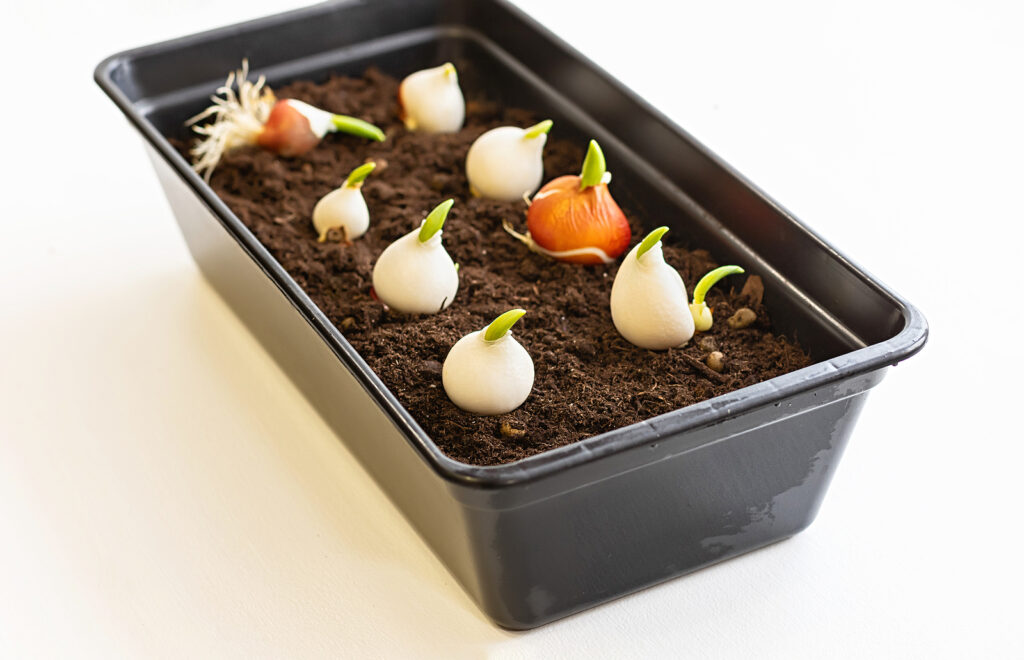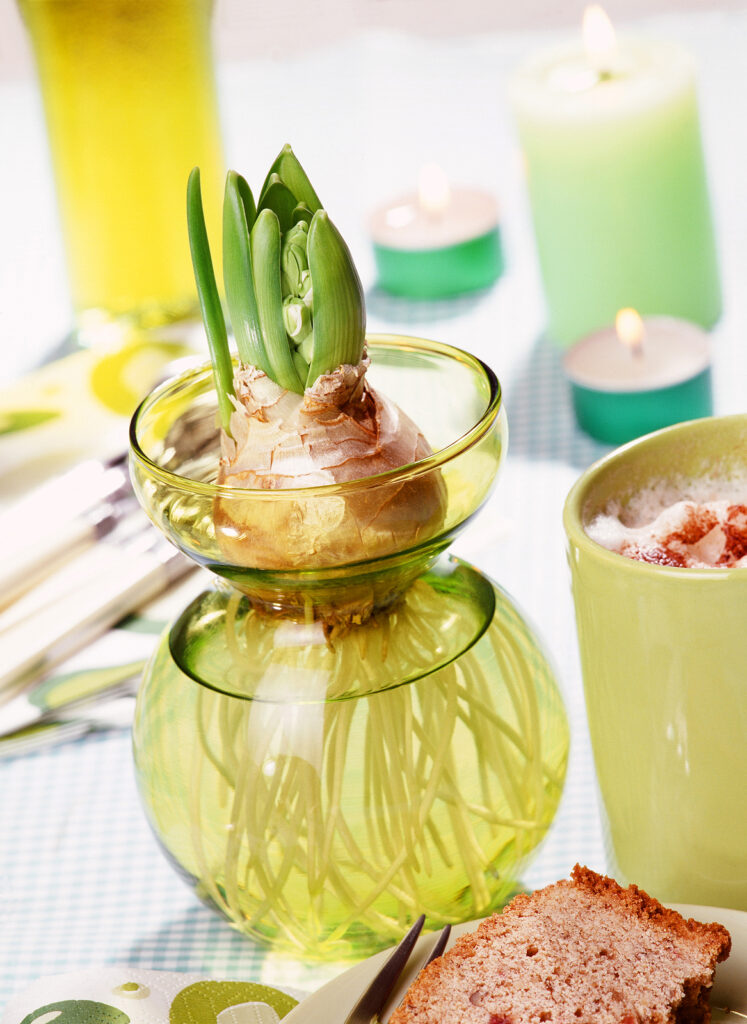Forcing is a garden term for growing plants outside of their natural season. Forcing usually means making plants grow and bloom earlier than they normally would outdoors—usually in winter.
Plants can be forced into growth and blooming by shielding them from the rigors of cold weather or they can be stimulated to grow and bloom by increased warmth—usually indoors. The application of heat by incandescent lights or heating cables are two artificial ways to force plants.
Forcing spring blooming bulbs during winter is a commonly used forcing method. The bulbs are induced to bloom several months before they would naturally.
Bulbs, corms, tubers, and rhizomes can be forced indoors because they contain stored-up food on which they live until they are rooted. To force these about all that is needed is moisture and extra heat. Many bulbs, corms, tubers, and rhizomes can be forced to bloom even before a significant root system has formed.

Forcing bulbs step-by-step
Here’s how to force bulbs (this method can also be used to force corms, tubers, and rhizomes):
- Purchase fresh bulbs in the fall as soon as they are available. Bulbs should be full and plump; avoid withered or dry bulbs.
- Chill the bulbs ahead of planting. Many but not all bulbs require chilling or dormancy in order to bloom. The easiest way to chill bulbs is to place them in a paper bag and place them in the crisper section of the refrigerator for several weeks. Bulbs can also be planted in a pot and the pot, soil, and bulb can be chilled. Tulips, daffodils, and hyacinths require chilling (see chart below).
- Use a light, well-drained, and easily worked potting soil. It should contain ample humus to hold moisture and when possible, it should be sterilized to rid it of plant disease organisms. (Bulbs can also be forced in moist sand and even in water alone though the bloom time will be shorter.)
- Use a container that has drainage holes that allow water to easily pass through.
- Plant the bulbs pointed side up. Plant them as close as possible for the best effect. Barely cover the tops with soil. If you are unsure which side is pointed, plant the bulb on its side.
- If you have not pre-chilled the bulbs, put the pot in a plastic bag and place it in the refrigerator or other chilly location such as a garage or garden shed and keep the soil just moist. (See suggested chill times below.)
- Remove the pot from the cold after the bulb sends up shoots and shoots are 1 inch (2.5cm) or so tall.
- Place the pot in a sunny window. Keep the soil just moist while the plant grows and blooms.
- After forcing, bulbs are usually spent and will not bloom heartily again; often, they are discarded. However, bulb plants can be transplanted into the garden if you like; they may gain strength and bloom again next year.

Chilling bulbs for forcing
Different bulbs need different cold treatment to force blooms indoors.
- Daffodil: Chill 14 to 17 weeks; blooms 2 to 3 weeks after planting in pots.
- Hyacinth: Chill potted bulbs 10 to 12 weeks; unpotted 11 to 14 weeks; blooms 2 to 3 weeks after.
- Tulip: Chill planted in pots 14 to 20 weeks; blooms 2 to 3 weeks after.
- Crocus: Chill planted in pots 14 weeks; blooms 2 to 3 weeks after.
- Grape hyacinth: Chill 13 to 15 weeks; blooms 2 to 3 weeks after.
- Amaryllis: No chilling, blooms 4 to 10 weeks after planting in pots.
- Paper-white narcissus: No chilling; blooms 3 to 5 weeks after planting in pebbles and water.
Also of interest:















